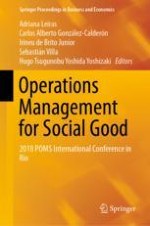This volume showcases the presentations and discussions delivered at the 2018 POMS International Conference in Rio. Through a collection of selected papers, it is possible to review the impact and application of operations management for social good, with contributions across a wide range of topics, including: humanitarian operations and crisis management, healthcare operations management, sustainable operations, artificial intelligence and data analytics in operations, product innovation and technology in operations management, marketing and operations management, service operations and servitization, logistics and supply chain management, resilience and risk in operations, defense, and tourism among other emerging Operations Management issues. The Production and Operations Management Society (POMS) is one of the most important and influential societies in the subject of Production Engineering and, as an international professional and academic organization, represents the interests of professionals and academics in production management and operations around the world.
